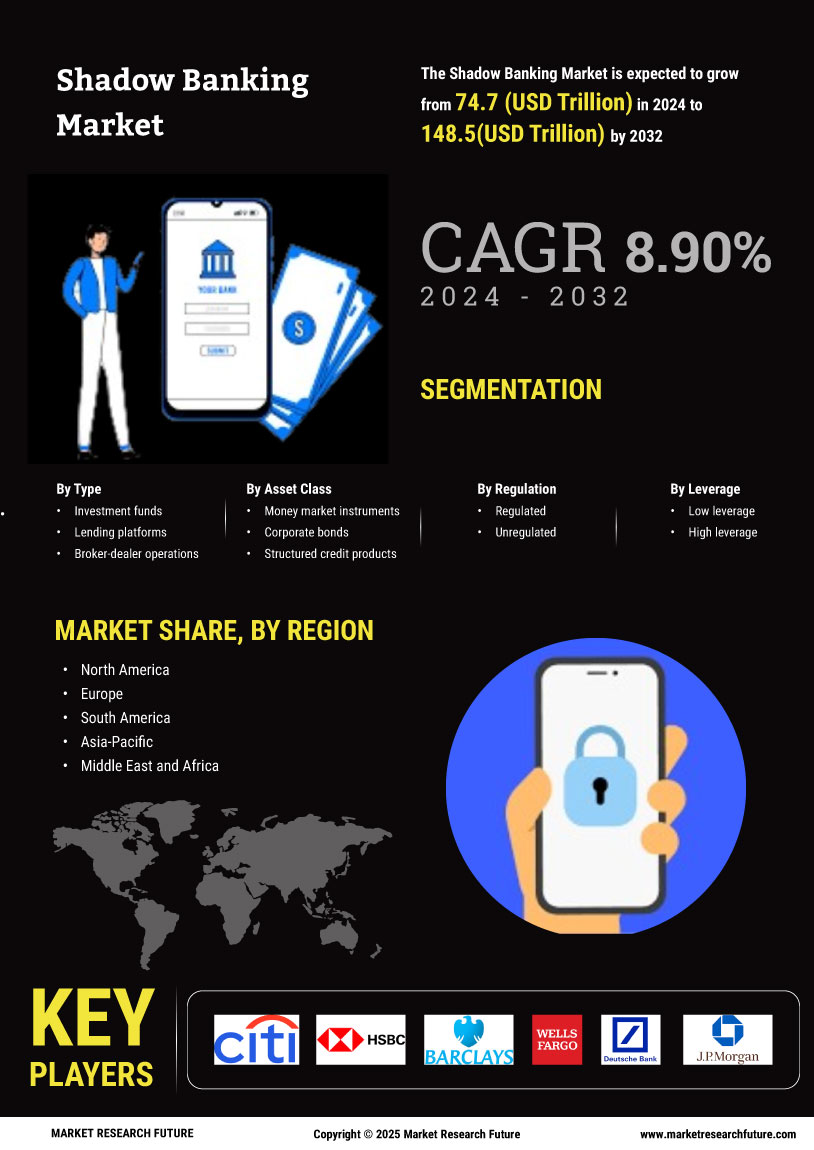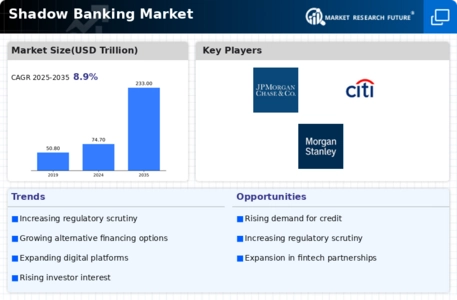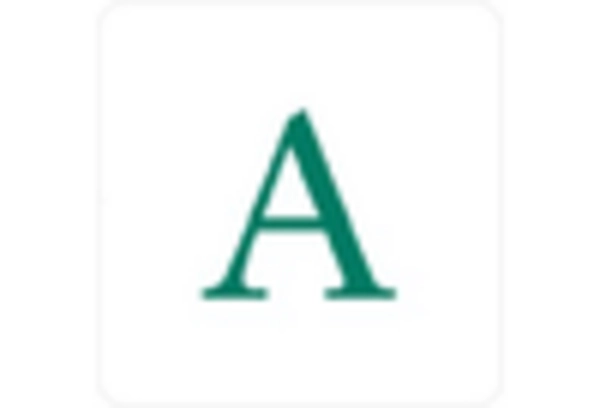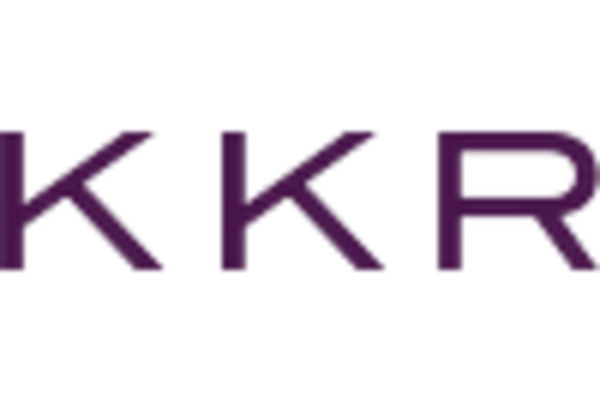Regulatory Evolution
The Global Shadow Banking Market Industry is experiencing a transformation due to evolving regulatory frameworks. Governments worldwide are increasingly scrutinizing shadow banking activities to mitigate systemic risks. For instance, the Financial Stability Board has proposed guidelines aimed at enhancing transparency and reducing risks associated with non-bank financial intermediaries. This regulatory evolution appears to be fostering a more structured environment for shadow banking, potentially leading to a more stable market. As regulations tighten, the industry may adapt, ensuring compliance while continuing to meet the financing needs of various sectors.
Market Growth Projections
The Global Shadow Banking Market Industry is poised for substantial growth, with projections indicating a market size of 74.7 USD Billion in 2024 and an anticipated increase to 233.0 USD Billion by 2035. This growth trajectory suggests a compound annual growth rate of 10.9% for the period from 2025 to 2035. Such figures reflect the increasing reliance on shadow banking as a viable alternative to traditional banking systems. The market's expansion is likely driven by various factors, including regulatory changes, technological advancements, and evolving investor preferences.
Technological Advancements
Technological innovations are significantly shaping the Global Shadow Banking Market Industry. The rise of fintech companies has introduced new platforms for lending and investment, enhancing accessibility for consumers and businesses alike. For example, peer-to-peer lending platforms have gained traction, allowing individuals to lend directly to borrowers, bypassing traditional banks. This shift towards technology-driven solutions is expected to contribute to the market's growth, with projections indicating a market size of 74.7 USD Billion in 2024. As technology continues to evolve, it may further disrupt traditional financial systems, creating new opportunities within shadow banking.
Global Economic Uncertainty
Economic fluctuations and uncertainties are influencing the Global Shadow Banking Market Industry. In times of economic instability, traditional banks may tighten lending standards, prompting borrowers to seek alternative sources of funding. Shadow banking institutions often provide more accessible credit options, which can be appealing during downturns. This dynamic suggests that the shadow banking sector may thrive in uncertain economic climates, as businesses and consumers look for more flexible financing solutions. Consequently, the market could experience accelerated growth, particularly as global economic conditions remain volatile.
Investor Appetite for Higher Returns
The Global Shadow Banking Market Industry is benefiting from a growing investor appetite for higher returns. With traditional investment avenues offering lower yields, investors are increasingly turning to shadow banking products, such as private debt and structured finance. These alternatives often provide attractive risk-adjusted returns, appealing to institutional and retail investors alike. As the market evolves, the influx of capital into shadow banking could further stimulate growth, with projections indicating a compound annual growth rate of 10.9% from 2025 to 2035. This trend highlights the shifting preferences of investors seeking enhanced returns in a competitive landscape.
Increased Demand for Alternative Financing
The Global Shadow Banking Market Industry is witnessing a surge in demand for alternative financing solutions. Businesses, particularly small and medium enterprises, often face challenges in securing loans from traditional banks due to stringent lending criteria. Shadow banking entities, such as private equity firms and hedge funds, are stepping in to fill this gap, offering flexible financing options. This trend is likely to drive the market's expansion, with forecasts suggesting a growth trajectory that could see the market reach 233.0 USD Billion by 2035. The increasing reliance on alternative financing underscores the evolving landscape of global finance.

















Leave a Comment